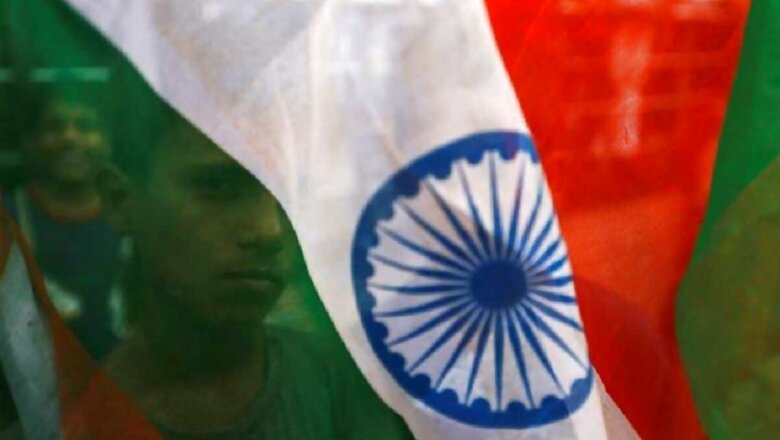
views
“No one pretends that democracy is perfect or all-wise. Indeed, it’s been said that democracy is the worst form of government, except all those forms that have been tried from time to time.” – Winston Churchill
NITI Aayog CEO Amitabh Kant’s statement about India’s “too much democracy” obstructing tough reforms and disabling competition with China raised many eyebrows. Irony, however, was that the statement resonated with many common folks! While being a technocrat, Kant might have phrased his observation about the Indian system poorly, it is indisputable that the Indian democratic model is in need for an evaluation, especially as we celebrate 72nd Republic Day.
Democracy Delivering?
Can the existence of liberty be the only defence for democracy—even if it doesn’t deliver on roti, kapda aur makaan: the bare essentials?
Forty per cent of Indian children are not meeting their full potential because of chronic under-nutrition or stunting. The State of Food Security and Nutrition in the World (SOFI) report records nearly 32 per cent of the Indian population suffering from moderate or poor food insecurity. In the Global Hunger Index, India is ranked 94 out of 107 nations and is in the ‘serious’ hunger category, behind Nepal, Pakistan, Bangladesh, Indonesia (so our poor neighbours are doing better, despite their so-called lack of democracy!). India has the highest prevalence of wasted under-five children in the world. In the Human Development Index (HDI), India ranks 131 out of 189 nations, behind its BRICS partners, in the company of Bhutan and Bangladesh, and much behind Sri Lanka.
India’s unemployment rate might not seem unusually high as it misses out the hidden unemployment in villages due to the lack of non-farm rural jobs. A crucial concern is India’s incapability to bring a boom in the manufacturing sector which is labour-intensive, unlike the service sector that contributes 60 per cent to the GDP but employs only 25 per cent of the total labour force. Majority of those employed fall in non-formal employment category, with no protection and social security benefits attached. The scarcity of alternative employment results in their sticking to exploitative jobs. The pandemic has turned this grim picture worse.
The much-touted demographic dividend of India—an estimated 65 per cent of the population below 35 years of age—might be on the path to turn into a demographic disaster, if India fails to log high economic growth for the next three decades, in order to engage this human resource in productive work. Otherwise, this huge section will turn into a dependent category, placing a heavy burden on healthcare and social security, which would be difficult for the Indian state to cope with.
ALSO READ| OPINION | India’s 72nd Republic Day: Of Courage and Contradictions
In contrast, China, starting from a level worse than India’s, lifted 750 million people out of extreme poverty, reducing it to only 0.4 per cent of its population, with its rapid economic growth spanning decades. Xi Jinping is said to be on the course of achieving his big goal of total elimination of extreme poverty. While India struggles to find solution to its problem of serious air pollution despite having very low per capita emissions, China is set to usher in “Ecological civilization”. So, while celebrating 72nd Republic day, should we not ask how our republic and democracy have fared in bringing in development and progress?
Democracy, an End in Itself?
“Freedom has many difficulties and democracy not perfect, but we never had to put a wall up to keep our people in,” said John F. Kennedy.
Will those hungry, poor and unemployed Indians like to trade places with the people of China, bartering economic well-being for freedom? Nobody’s certain of the answer, and that’s a problem. Democracy cannot be an end in itself.
Francis Fukuyama’s famous theory of “End of History”, where he prophesies that the end point of all governing systems is liberal democracy, is already under attack from the Beijing Consensus or the Chinese alternative development model. Fukuyama’s defence of his theory—expecting India’s progress to be “stable, long-term and more successful” than the fast-paced Chinese one—might turn on its head if India misses this moment of demographic transition to usher in high economic growth.
India being the biggest democracy in the world has problems like none other, not just due to its sheer size but also the breadth of its diversity, which though beautiful is daunting for consensus-building. Multi-religious, multi-ethnic, multi-linguistic, multi-caste, multi-regional groups can all have competing interests, add to that the class and occupation-based clash of interests, and that’s a plethora of diverse interest groups. Every clash of interest can quickly turn into a communal conflict and flare-up—something that is in the nature of conflicts in a multi-religious society, predicted political scientist Samuel Huntington.
Among others, this is an important reason why the Indian system is status-quoist, which also translates into having a poor delivering capacity on the implementation front as the changes needed are extremely slow to come by, affecting the responsiveness of the whole system. Against a fast-evolving world, this lack of adaptability and responsiveness creates a big drag on development and progress.
The Way Forward
The challenge is how to move ahead at a better pace without compromising on democratic ethos. For every change that is made, some interest group(s) will not be in agreement. While they must be free to protest peacefully for as long as they wish, and the government must have a dialogue with them and attempt to arrive at a solution, protest cannot be justified to the extent of blockading borders, railways or any crucial public infrastructure; also, it adversely affects the ordinary citizen whose life and livelihood suffers due to such actions.
Whether morally, ideologically or pragmatically, whichever way one assesses such steps for fulfilling one’s demands, it appears unjustifiable. In democracy, debate, discussion, advocacy, peaceful protests are important but the tool to shape the decision-making at the helm is voting—to ensure the interests of most groups are accommodated, not just the most vocal and organized ones.
The Indian citizenry, even the most educated lot, stay shockingly unaware of the reasons and lack understanding of the government’s policies, voicing their support or opposition squarely on the basis of political leanings—a tendency not in the best interests of the society and the nation. Peoples’ representatives ought to reach out to their constituency voters for communication and participation in the government’s policy-making process. A greater participation before reforms and outlet for registering disagreement will bring down organized protests.
ALSO READ| As PM Modi Unleashes Wave of Reforms, He is Going to Face Even More Resistance
Another important factor is going to be the rate of development—not just economic growth—which will foster hope, not distrust, in ordinary people. Even so, peaceful protests must be allowed, but not blockades. The government and the judiciary—the latter has given orders reiterating its disapproval of blockades time and again—must work towards this end.
Huntington calls the young people protagonists of protest, instability, reform and revolution—which path the young India will take depends on how responsive the governance system is in catering to their needs. To hold back the young India, trapped in a slow and unresponsive system, will not just be a bad idea, it might be an impossible one.
Read all the Latest News, Breaking News and Coronavirus News here




















Comments
0 comment